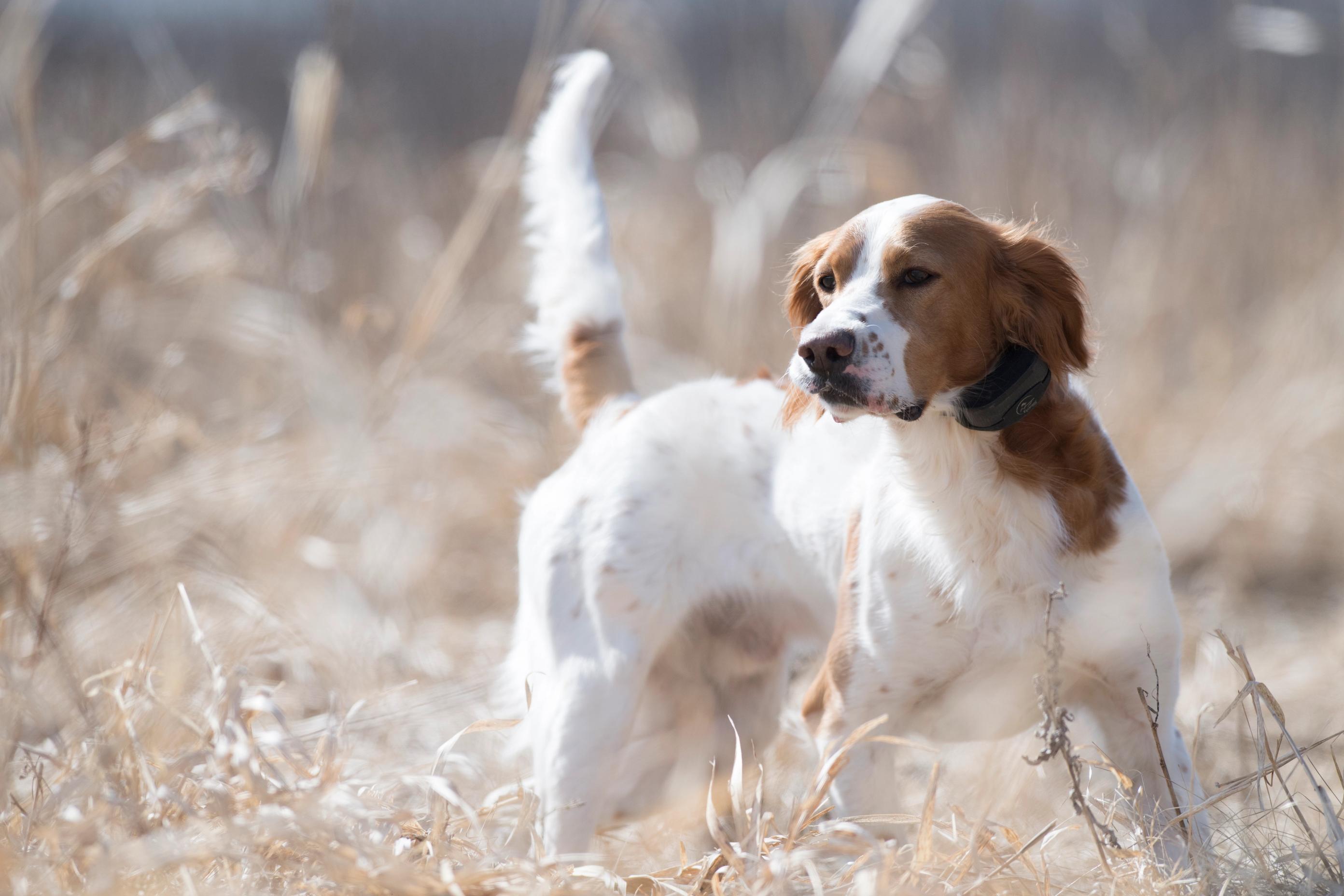
Training Pointing Dogs with Birds - Part 3
Posted by LTC Jim MorehouseIn Part Two of this series I outlined my method for tying in the “Whoa” command with live birds. Now it’s time to get into the some more advanced live-bird work. Everything I’m explaining here still involves using a 15-foot lead or check cord. I don’t introduce the electronic collar until a dog is completely broke to wing and shot.
After many repetitions with a live, harnessed pigeon on a fishpole like I described in Part Two, the next thing I do is expose the dog to lots of live birds on the ground. I’m talking about six or eight quail or five or six pigeons. I let the birds walk around while I’m standing next to the dog, keeping control using the lead. The whole time, I’m talking quietly: “Easy, easy, easy …” I want to reinforce that these birds aren’t something to try and catch.
Now, in the same way you started your “Whoa” training using the lead and walking around the dog while making him stay put like I described in Part One, you’re going to do it again with all these birds walking around in plain sight. You’re trying to work up to the point where you don’t need any pressure on the lead at all, and he’ll just stand there and watch those birds no matter what they’re doing.
When your dog is reliably staying put with those birds walking around and tempting him, it’s time to work on planted birds. I use a pigeon for this next step. After I plant the bird in cover I bring the dog on the 15-foot check cord and work him toward the bird. What is most important here is that you don’t approach from downwind. Always come from the side. Here’s why: A dog wants nothing more than to get his nostrils full of that bird scent, and that’s what leads to a tendency to creep forward to get more scent. So you bring him in from the side and you watch. The second that nose and body language shows he’s gotten that whiff, you give a tug and say “Whoa.” Now that dog has associated the tug, “Whoa” and the scent of the bird with stopping. After several repetitions, I stop saying “Whoa” and just use the tug. What you’re working up to is that when that dog comes in from the side and hits that scent, he stops and stays without any tugging or any command from you.
When the dog is hitting that point and holding it with no reinforcement from you, it seems like the next step would be to remove the check cord. Don’t do that just yet. Leave the lead on him, but don’t hold it any longer. Be ready to grab the lead and reinforce with a tug, of course. It’s a big step to remove that lead, and there’s a transition period before you can do that.
Remember, you can’t be in a hurry. If you make a mistake and that dog breaks and catches a bird, you’ve gone backwards and now you have to do a lot repetitions just to get back to where you were before the mistake.
In Part Four of this series, I’ll give you my thoughts on how to handle a pointing dog’s biggest challenge, which is running birds.

LTC Jim Morehouse
Tuscon, AZ
Raised in the Finger Lakes area of New York State, Jim was involved in hunting and birddogs from an early age. Upon graduation from college, he joined the US Army in 1967. He served until 1989, retiring at the rank of Lieutenant Colonel. After his retirement, Jim and his wife...
Related Articles

Training Pointing Dogs with Birds - Part 4
by LTC Jim Morehouse
In Part Three of this series I explained how to work on more advanced steadiness exercises using live birds. Now I’m going to finish by giving you my thoughts on how to deal with running birds. I’ve mentioned that when you start using live birds, you always try to work your...

Training Pointing Dogs with Birds - Part 1
by LTC Jim Morehouse
When SportDOG® asked me to write training articles on some of the aspects of training pointing dogs to handle birds, it seemed like a pretty easy task. As a full-time trainer and quail guide in Arizona, pointing dogs and birds are my passion. However, as I started to write about...

Training Pointing Dogs with Birds - Part 2
by LTC Jim Morehouse
In Part One of this series I explained why “Whoa” is the most important command in pointing dog training. Now I’ll explain the next step I take toward tying “Whoa” and live birds together. I want to give my young dogs plenty of experience with finding live birds. One, it’s fun....
